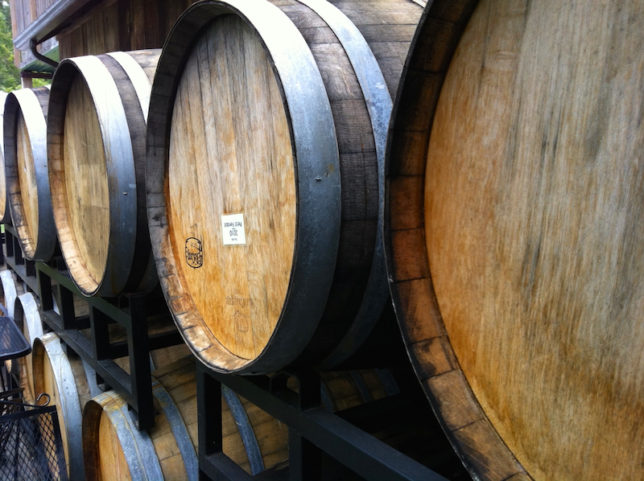Author: Warren
The Cajun Cooks Smothered Chicken
The Cajun Cooks Shrimp Creole
Drink or Hold? A Conversation about Cellaring Virginia Wines
https://yourartbeat.net/2025/03/11/7bbvqpyu0 Wine enthusiasts are probably familiar with the drink or hold concept. The popular Wine Spectator magazine features drink or hold charts monthly to alert readers whether vintages from particular wine regions are ready to drink now or held (cellared) for extended periods. When we began our travels about Virginia wine country over nineteen years ago, most Virginia wines, particularly reds, were probably ones to drink at the moment. However, an influx of better winemakers and even better vineyard practices now allows us to consider drinking or holding Virginia wines crafted from exceptional vintages like other wine regions in Europe and the United States.
Ambien Buyers In Usa We interviewed five winemakers from five different regions in Virginia to get their answers to the questions surrounding the call to either drink or hold. They include Lee Hartman of Bluestone Vineyards, Jon Wehner of Chatham Vineyards, Melanie Natoli of Cana Vineyards, Stephen Bernard of Mountain and Vine Vineyards and Winery, and Justin Rose of Rosemont Vineyards.
https://hazenfoundation.org/4rlww5v0l3 
https://www.fogliandpartners.com/mwznk6s3yh3 Drink or Hold Questions:
https://www.plantillaslago.com/xxuikjzd6 1. Which red grape varieties grown in your AVA lend themselves to aging potential? Do white varieties also have the ability to age well? If so, what are they?
Acidity, tannins, and alcohol determine a red wine’s ability to age well. A brief primer on these elements may read like this: 1) the higher the acidity, the longer a wine can age; 2) higher tannins provide firmness and structure to carry a wine over time; and 3) “hot” alcohol levels quickly overtake fading fruit so lower alcohol levels are preferred. A balance of these elements produces red wine that can age well. We frequently hear from winemakers that good wine is made in the vineyard, which means that proper vineyard management and Mother Nature both play a role in whether these components of cellaring wine are attainable. Unlike Napa Valley in California, Virginia’s wine-producing regions are a collection of micro-climates with varying temperatures, rainfall amounts, elevations, etc., affecting fruit quality and acidity levels, tannins, and alcohol. Lee Hartman posited that in his region, “the Shenandoahs are unique in their location between the Blue Ridge and Alleghenies.” Therefore, the higher elevation and protection from precipitation plus cooler temperatures allowed him to craft wine with brighter acidity and, thus, aging potential. Other wine regions in the state benefit from their unique locations, so it is always advisable to chat with a winemaker or tasting room associate about a winery’s particular microclimate.
https://municion.org/h6oceaqy So, how did our winemakers vote on the question of red wine grapes in Virginia and their aging potential? Petit Verdot earned the top votes for the grape variety that best lends itself to aging potential due primarily to its heavy tannins. Red blends garnered several mentions, especially if merlot and petit verdot are part of the mix. (Readers may already know Bordeaux as a wine region known for its age-worthy red blends.). Justin Rose noted that sometimes Merlot produces age-worthy wines; Jon Wehner confirmed that a 2002 Merlot from Chatham, though at its peak, still held its own. Rose also tossed Tannat into the ring, while Lee Hartman added Chambourcin to the list due to its high acidity.
https://www.salernoformazione.com/iwq6fdc 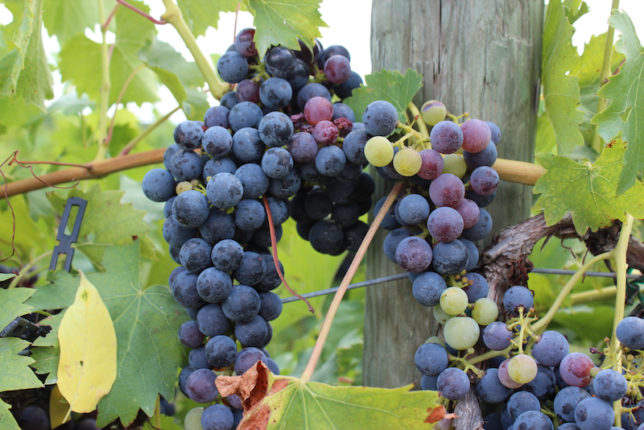
https://www.varesewedding.com/hsmt3eoapb White wines can undoubtedly be aged, too, whether they hale from European regions, California, or Virginia. Most of our winemakers gave the nod to Chardonnay, with Jon Wehner giving a 5-7year window for oaked Chardonnay. Bernard cautioned, though, that heavily oaked chardonnays can produce a broader style that, along with higher alcohol levels, does not age well. However, Melanie Natoli sang the praises of Petit Manseng, as did Lee Hartman, and Natoli declared that aged Petit Manseng had the potential to shine as well as aged Rieslings. Justin Rose suggested the hybrid Chardonel grape as another candidate with the best vintages providing a 5 to 6-year window for aging.
Buy Ambien Uk 2. Research indicates that very few wine consumers “hold” or age wines. With this in mind, do you advise consumers, especially those tasting in the tasting room, to “hold” certain vintages? What feedback have you gotten from consumers once they have opened a bottle from a particular vintage “hold”? Are there any pleasant surprises from consumers who held on to a “drink now” vintage such as 2018?
Our panel of winemakers subscribed to my philosophy: multiple purchases during exceptional vintages and then drink one now, another at a mid-point, and another at its peak time in the bottle. (Lee Hartman refers to the last bottle of this strategy as the “cellar defender.”) Most Virginia wines are purchased at a tasting room rather than a wine shop, so our winemakers are at an advantage to suggest cellaring during stellar vintages such as 2019. Melanie Natoli releases red wines at Cana once they have had enough time to age in the bottle first, so “I’m releasing at a drink or hold time, not just hold {time}. However, Stephen Bernard pointed out that this decision boils down to consumer preferences, especially since they are tasting wines in the tasting room and have already made decisions regarding preferences and perhaps even cellaring. Those who prefer young wines will do so, while others who prefer savory nuances will cellar.
https://chemxtree.com/4dvnd64 3. What are the risks of “holding” wines even from the best vintages?
https://municion.org/ec8i0cm The resounding answer to this question was “disappointment.” Jon Wehner cautioned that cellaring ultimately leads to a loss of bright fruit and acidity that gives way to complexity, spiciness, and smoothness. Melanie Natoli added that this process is due to the dynamic nature of wine that is constantly evolving, and for her, aged wines that lack acidity seem “tired.” Our winemakers also agreed that storage habits can contribute to the downfall of even the best vintages. For example, storing wines in the kitchen and above the refrigerator is a deadly practice. Do you want to protect that “cellar defender”? Be aware of best practices for cellaring to be sure that the last drop will bring smiles rather than tears.
https://www.tomolpack.com/2025/03/11/21ed5al https://www.tomolpack.com/2025/03/11/rilegmws2 4. Do natural corks have an advantage over synthetic corks or screw caps regarding aging/holding?
Buy Ambien Generic Online The answers from the winemakers on this question varied. All agreed that natural cork leads to greater risk due to inconsistency if cellaring exceptional vintages is the goal. Cork taint cannot be decanted away, and crumbling corks, which have tasters fishing cork particles out of their wine glasses, are two possible hazards of aged wines enclosed with natural cork. Jon Wehner has moved away from natural cork in favor of a composite product from Nomacork, while Lee Hartman is switching to agglomerated corks. While Justin Rose has been generally pleased with synthetic corks, he will return to high-grade natural cork for reserve wines. Melanie Natoli cited fears that synthetic corks will age a wine much faster and prefers natural cork. Likewise, Stephen Bernard prefers tried and time-tested natural cork and noted advancements in TCA-free corks such as Diam.
https://www.salernoformazione.com/4cpejz9 The crunch of screw caps is increasingly replacing the familiar pop of corks being released from wine bottles, but these closures cannot transfer oxygen that allows wines to age well. However, Melanie Natoli noted that Cana’s 2015 Albarino and Petit Manseng, both screw-capped, were still holding up quite well. Lee Hartman and Stephen Barnard both favor screw cap closures for wines meant to be enjoyed while young, especially brighter, fruitier white wines.
https://ottawaphotographer.com/230sj8vy 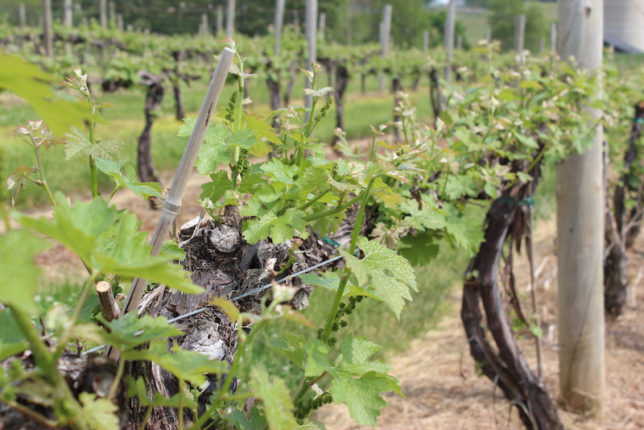
5. Do you tend to drink wine early or hold it if possible? Explain.
Cheap Zolpidem Tartrate 10 Mg So, what were the preferences of our winemakers? Jon Wehner and Justin Rose prefer to hold exceptional vintages. Although Stephen Bernard generally enjoys wines early, as a winemaker, he cellars wine to taste and then provides feedback to himself and his customers. Melanie Natoli drinks and holds depending on the vintage and the producer. Like her colleague, Stephen Bernard, she maintains a cellar of every Cana vintage to taste over time and learn. Lee Hartman and his wife are in two camps. Lee enjoys younger wines that are fresh and lively, but his wife would instead enjoy older wines as they peak and become more complex. For those in a similar situation, Lee Hartman suggests decanting a young wine and allowing it to breathe for a while. Still too tight? Store it properly and enjoy the next night. Our winemakers all agreed that appreciating wine, regardless of age, should be a fun experience to share with others.
https://www.mdifitness.com/obp964n4a In the end, wine should be enjoyed whenever the consumer wants to. Lee Hartman cautioned against overthinking the whole matter, aptly stating, “There’s a time for Barolo and a time for Nouveau…” We concur with this statement. While collecting exceptional wines from anywhere is fun, the bottom line should be enjoyment without judgment.
Below is a general consensus on how our winemakers rated vintages from 2019 through 2022.
2019-Very Good-Hold up to 2030
2020-Average-Drink/Hold up to 2026
2021-Good to Very Good-Hold (when released) potentially to 2030
2022-Very Good-Hold (when bottled and released) potentially to 2035
2023? Make room on your wine racks when this vintage is bottled and released, as all of our winemakers described this vintage as a potential blockbuster.
https://www.infoturismiamoci.com/2025/03/m74us0wfki We thank all of the winemakers who participated in this survey. We know their time is precious. Please plan to visit the winemakers and wineries mentioned in this article and engage them in a conversation about vintages, aging, and all things that make tasting their wines a memorable experience. Please mention that Virginia Wine Time sent you!
The Cajun Cooks Cassoulet
The Cajun Cooks Gumbo!
Order Clonazepam For Sleep Which Virginia wines does Warren pair with his Gumbo? Watch to the end to find out!
The Cajun Cooks Jambalaya Served With Bluestone Vineyard Wines
Thanksgiving and Virginia Wines
Congratulations to the Charlottesville area being named wine region of the year in the Wine Enthusiast’s 2023 Wine Star Awards! Check out the article here.
https://ballymenachamber.co.uk/?p=3u45y8e It’s that time of year when we all begin to consider holiday menus; of course, this should include pairings with Virginia wines. In this post, I make wine recommendations from the Monticello AVA for the Thanksgiving holidays.
Before the Big Event: Cheeses, Appetizers including shellfish
(Disclaimer: Some of these wines could also be paired with turkey. Let side dishes guide your selection.)
2021 Afton Mountain Vineyards Albariño
2021 Blenheim Albariño
2021 Southwest Mountains Vineyards Gruner Veltliner
2022 Michael Shaps Sauvignon Blanc
2022 Veritas Vineyards Sauvignon Blanc
2022 Barboursville Vineyards Vermentino Reserve (toss in the 2014 for a vertical surprise!)
2022 Keswick Vineyards V2
2022 Pollak Vineyards Durant White
2020 Southwest Mountains Vineyards White Blend
Buy Ambien In Mexico Turkey and Trimmings: (Consider side dishes when making your decision.)
2019 Blenheim Vineyards Chardonnay
2015 Michael Shaps Chardonnay
2021 Pollak Vineyards Chardonnay
2021 Septenary Vineyards Chardonnay
2022 Afton Mountain Vineyards Gewürztraminer
2022 King Family Crose (rosé)
2022 Pollak Vineyards Rosé
2022 Septenary Vineyards Rosé
2022 Michael Shaps Viognier
2022 Pollak Vineyards Viognier
2021 Southwest Mountains Vineyards Viognier
2022 Veritas Vineyards Viognier
2019 Barboursville Vineyards Nascent
2020 Blenheim Vineyards Painted White
Purchasing Zolpidem Red Wines:
2021 Afton Mountain Vineyards Cabernet Franc
2021 Barboursville Vineyards Cabernet Franc
2021 Southwest Mountains Vineyards Cabernet Franc
2020 Blenheim Vineyards Merlot
2019 Veritas Vineyards Merlot
2016 Septenary Vineyards Manor House (I’d pair this one with leaner beef dish, too.)
Beef, Venison, and other Hearty Meat Dishes:
2020 Barboursville Vineyards Nebbiolo
2019 Southwest Mountains Vineyards Petit Verdot
2019 Barboursville Vineyards Octagon
2020 Blenheim Vineyards Painted Red
2016 Michael Shaps L Scott
2017 Septenary Vineyards Carriage House
2021 Veritas Vineyards Momentarius Red
https://www.tomolpack.com/2025/03/11/kn6qrfi6 After Dinner: Bold Cheeses, Roasted/spiced Nuts, Etc.
2021 Southwest Mountains Vineyards Petit Manseng
2017 Septenary Vineyards Tavern Port
Can’t make it to the Monticello AVA by Turkey Day? We will post suggestions from outside of that region. However, if you plan to visit the wineries listed in this article, please mention that Virginia Wine Time sent you!
Winery 221 and Meet Up With Friends
Now that we are both retired, Paul and I can take advantage of weekdays to enjoy local vacations, and we recently took a trip to the Charlottesville area and visited wineries in the Monticello AVA. We were able to visit the 221st Virginia winery for us and catch up with friends who were also in the area to appreciate local wines and spectacular fall scenery.
https://municion.org/3p5qe1oyjq So what was winery #221? Southwest Mountain Vineyards, a new addition to the Monticello AVA has already earned an excellent reputation. The winery held a soft opening a few weeks before our trip; however, we were not able to attend. Therefore, it was our mission to find out what the buzz is all about. The two-storied tasting room is indeed expansive with the first level accommodating walk-in guests while those with reservations can enjoy a tasting on the second level. We made a reservation, received an excellent tasting of flights at the bar, and then marveled at the stellar view of mountains and foliage already putting on a pageant of autumn colors. Of course, we were interested in the wines, and these did not disappoint.
Three flights were offered: a white flight, a red flight, and a reserve flight. We shared a flight of each and noted our favorites. On the white flight, I preferred the easy-drinking White Blend 2020 composed of Viognier and Petit Manseng. Its tropical notes and fruity palate finished leaner than expected. Sip this one on its own or pair it with shellfish any day of the year; it’s also versatile enough to pair with poultry or pork. Virginia is known for its quality Cabernet Franc, and the 2021 vintage here was my favorite with its notes of violet, black pepper, and dried herbs. The 2019 and 2021 Red Blends were also well-crafted but still a bit tight—-buy now but drink later. Finally, the reserve flight featured my favorite grape, Chardonnay. Paul and I reached a split decision with Paul giving the nod to the approachable 2020 reserve while I gravitated to the oakier nuances of the 2021 Reserve.
https://ottawaphotographer.com/7r8mst7 
https://www.wefairplay.org/2025/03/11/3dtr7y3qm 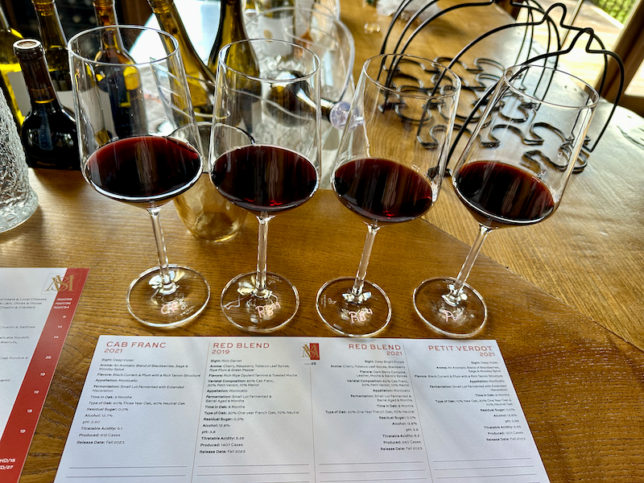
As we sipped through our flights, we also nibbled on cheese and charcuterie available from the food menu. Our tasting associate also treated us to a sample of the 2021 Gruner Veltliner and the 2019 Petit Verdot. The Gruner was excellent and presented bright stone fruit on the nose and enough weight on the palate to enjoy with a holiday menu. Paul sang the praises of the 2019 Petit Verdot and suggested that this one was already hitting its stride. We ended up purchasing a bottle of each.
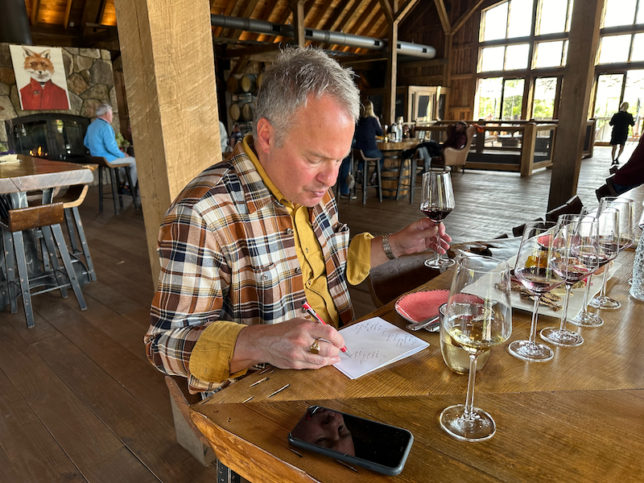
Of course, we like to ask questions, and our tasting associate was eager to answer them. Wines through the 2022 vintage were crafted by outstanding winemaker Emily Pelton of Veritas Vineyards. Grapes are grown on the Castalia and Ben Coolyn Vineyards, and varieties grown include Chardonnay, Viognier, Merlot, Petit Verdot, Petit Manseng, Cabernet Franc, and Gruner Veltliner. Upcoming vintages from 2023 and beyond will be made by renowned South African winemaker Boela Gerber.
Our visit to Southwest Mountain Vineyards kicked off a five-day vacation to the area, and we certainly visited other wineries while there. However, this trip also allowed us to catch up with friends. Below is a photographic journal of these gatherings:
Frank Morgan and Kathy Lang Wiedemann:

Nancy Bauer and winemaker Luca Paschina

George Hodgson of Veritas Vineyards
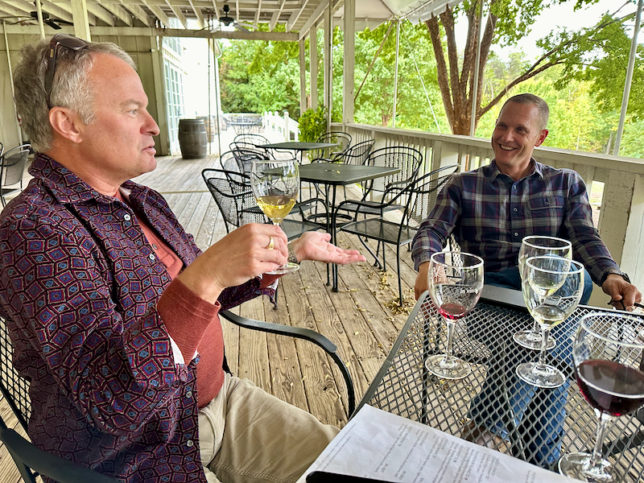
Stephen Banard, now winemaker at Delfosse (soon to be Mountain and Vine) Vineyards

Our next post with offer holiday menu suggestions based on some of the wines that we tasted on our trip to the Monticello AVA, Until then, we recommend that you take time to enjoy the gorgeous show put on by Mother Nature this time of year with your own trip to the Charlottesville area. Plan to visit Virginia wineries along the way, and mention that Virginia Wine time sent you!
Virginia Wines of Summer 2023
The end of summer is upon us now, and it finishes with quite a bang as the area finally gets its own dose of excessive heat. Paul and I visited a few wineries instead of a real vacation, and I recap some of our favorite wines of the 2023 summer.
Glen Manor always tops our list of wineries to visit, and I was particularly interested in sampling its 2022 Vin Blanc, a blend of Sauvignon Blanc and Petit Manseng. Its fruity aromas and bright, fresh palate paired well with a warm summer day and dragonflies that flitted about outside. The Sauvignon Blanc consistently earns my top marks, and the 2022 vintage was no exception. This vintage presented tropical fruit notes and seemed destined to be enjoyed with shellfish. We frequently attend concerts at Wolf Trap and, several days later, brought along a bottle of Glen Manor’s 2022 Morales Rose to sip as the sultry vocals of pianist Diana Krall serenaded us.

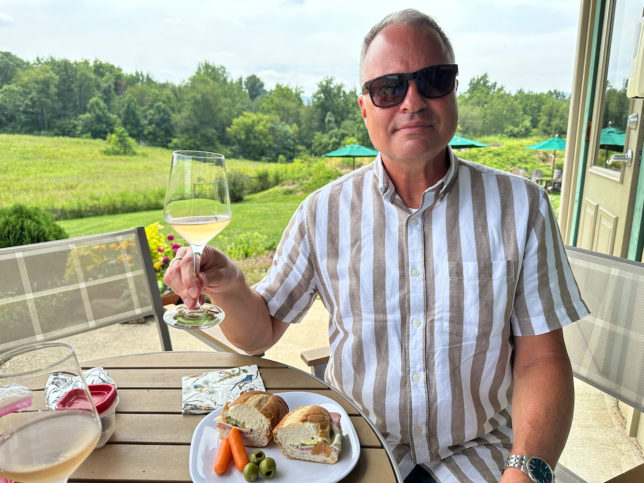
Another day, we completed a club member pick-up at Delaplane Cellars; of course, we tasted the current releases offered at the winery. The non-oaked 2022 Chardonnay offered a light touch on the palate with pear and citrus flavors. It was perfect with light cheeses that we brought along for the afternoon tasting. The 2020 reds in Virginia seem fruity and accessible, and this was the case for the 2020 Rusticity. Buy this one now to enjoy with grilled fare and an al fresco dinner.
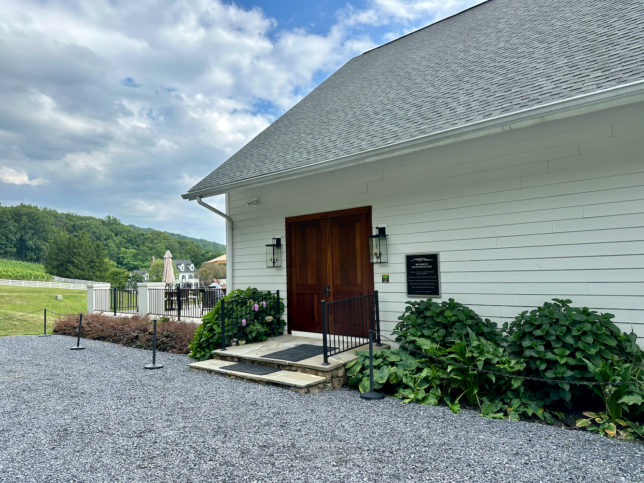
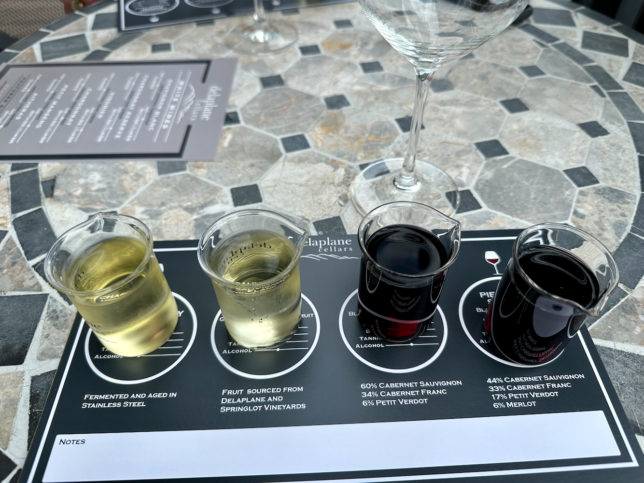
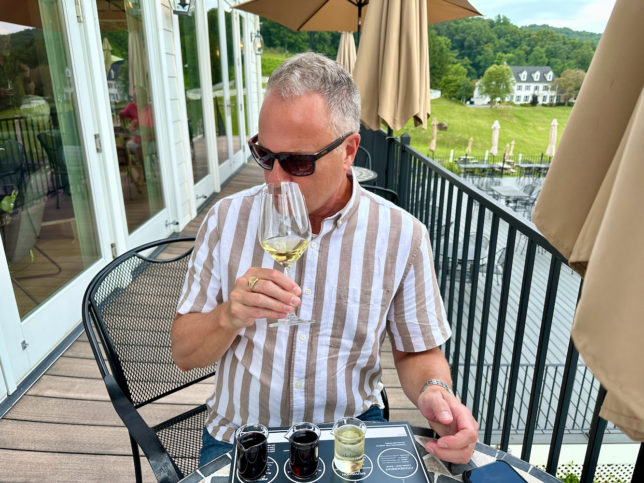
Finally, Paul and I journeyed to Capstone Vineyards, and we restocked on its sparkling wine and the 2022 C2 blend of Chardonnay and Chenin Blanc. We also purchased a bottle of the 2022 Vintner’s Blend, a wine that unleashes a pleasant fruity, berry assault in the mouth—-buy to enjoy now or savor in the fall. However, with the Capstone Sparkling Wine, we officially said our goodbyes to summer on Labor Day, and I made one final toast to my retirement, which formally began on July 1 of this year. Our last clink of the flutes signaled a new beginning for me!
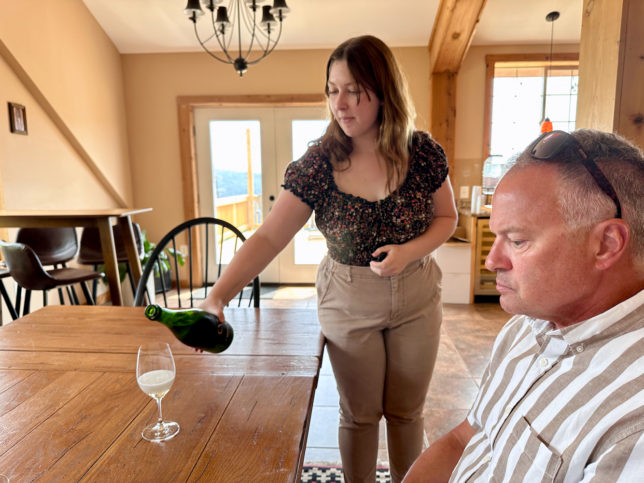

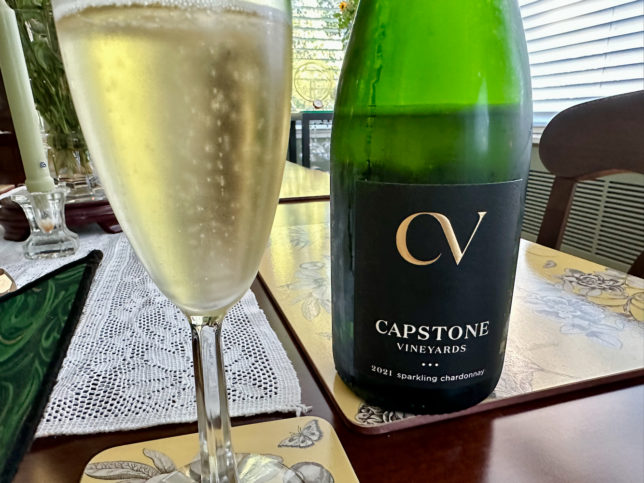
What were some of your favorite Virginia wines this summer? Let us know. Plan a visit to the wineries mentioned here; of course, tell them Virginia Wine Time sent you!
